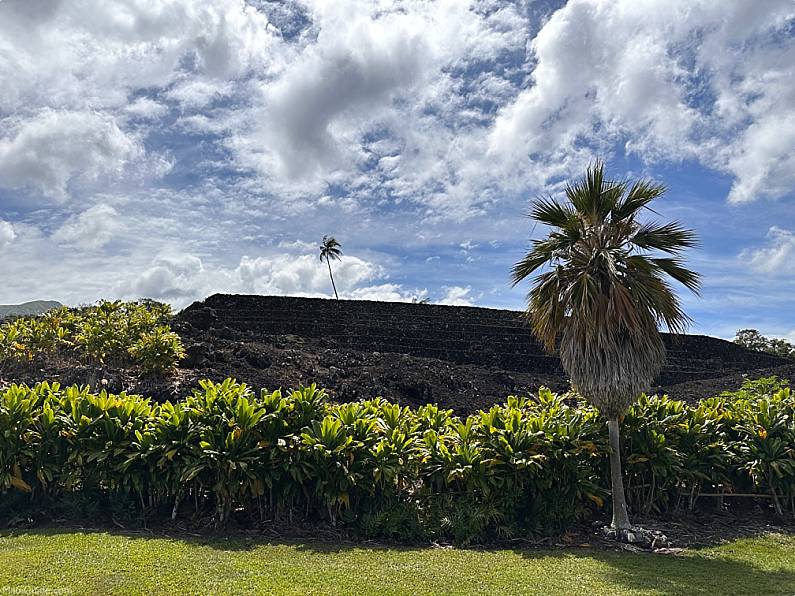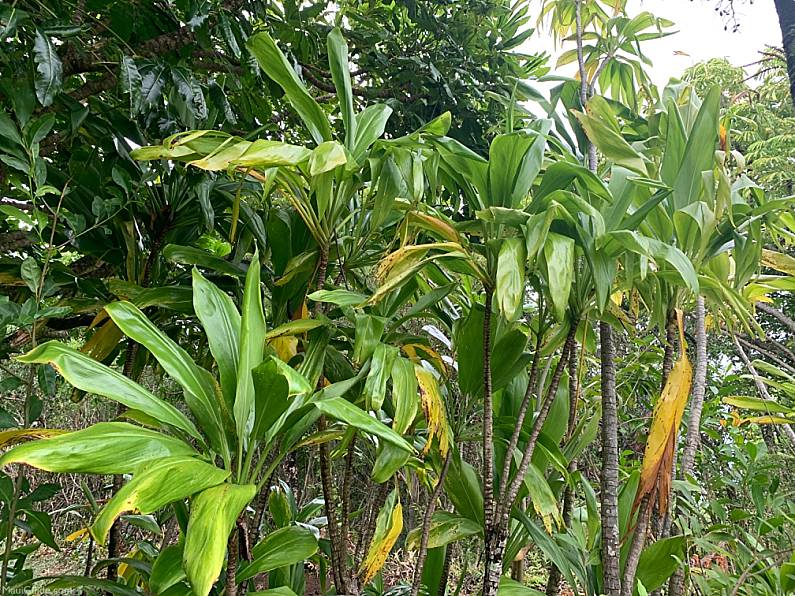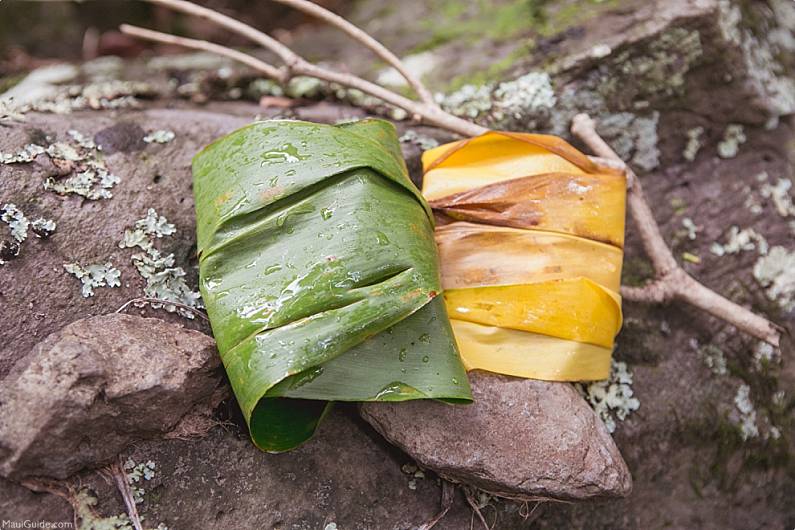What is Kī?
You may wonder why many homes in Hawaii have a colorful long-leaved plant in each corner of the property. The Ti plant, also known as Kī in Hawaii, is a highly useful and culturally valuable flora. From the roots to the leaves, Kī has provided life-sustaining tools for Hawaiians for centuries. Here are some things to know about the Hawaiian Ti Plant, Kī.

Kī – Hawaiian Ti Plant
Cordyline fruticosa (L.) A. Chev.
Agavaceae, Agave Family
Polynesian Introduced
Kī is an elegant plant with few branches. An old plant can grow over fifteen feet high. Its broad, smooth leaves overlap each other at the base with the lower leaves turning yellow and dropping off the plant. Occasionally, a flowering stalk with numerous branches bears many pink, dainty flowers. On some varieties of Kī, small red or yellow berries will develop from each flower.

Kī is usually naturally found at the edge of the woods and in wet, open forests at lower elevations. But we have found it can grow at higher elevations in drier climates (we have it growing in each corner of our property in Makawao.) Kī is almost always found growing around Hawaiian households because of the belief that it wards off evil spirits and for its utilitarian value.

Kī has a myriad of uses. The leaves are used as thatching material for hale (traditional dwellings) and rain capes, ceremonially, and in food storage and wraps for cooking. The stalks of green leaves are especially useful in the preparation of an imu (underground oven) as a lining to protect the food from the hot stones and to lend flavor. Kī held sacred significance for the ancient Hawaiians, symbolizing both elevated status and divine authority.

The leaves are also used as skirts. When you attend a Maui luau, you’ll find many of the hula dancers are wearing ti leaf skirts (no, they’re not made of grass.) To fashion a traditional Hawaiian ti leaf skirt, it is essential to start by delicately thinning the thick end, where the ti leaf joins the plant, by carefully removing a section of the mid-rib. Thus this slenderized portion is elegantly draped over the waist cord and securely fastened beneath it by tying it to itself.

Legend claims there once was a shark that lived in the river of Waipiʻo Valley, Hawaiʻi. Before a person would dare to swim across the stream, a stalk of Kī was cast in. If the stalk disappeared, the shark lingered nearby. If the stalk floated downstream, however, then crossing was safe and one could take the plunge.


